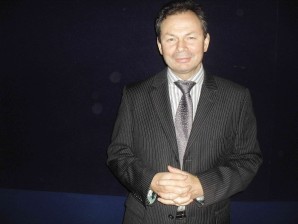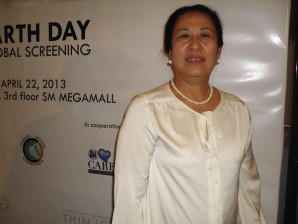‘Thin Ice’: Climate change is a clear and present danger
Although there are still “some people who argue that climate change is not real,” Trevor Lewis, deputy chief of mission of the British Embassy, said “many scientists are devoting their lives [to] studying climate change… People are actually taking serious steps to deal with this. Lots of scientific brains are looking at this.”
Lewis made the comment before the screening of “Thin Ice: The Inside Story of Climate Science,” which aims precisely to counter the arguments of climate change naysayers.
With climate scientists being attacked for the integrity of their work, “Thin Ice” producer and director Simon Lamb embarked in 2006 on a six-year journey to four continents to document scientists working in fields as diverse as paleontology, physics, oceanography and computer science. He set out to prove that climate change is not a hoax.
The film is a joint project of Oxford University in the United Kingdom, Victoria University of Wellington in New Zealand and London-based DOX Productions.
“The main message of the film is that climate scientists are like any other scientists and they can be trusted because their quest is to understand the planet’s climate as fully and accurately as possible,” said Lamb, who has a doctorate in geology from Cambridge University.
The Climate Change Commission (CCC), under the Office of the President of the Philippines, partnered with the British Embassy, New Zealand Embassy, SM Cares and SM Megamall to bring the film to the country.
It was presented to members of the academe, media and hundreds of young viewers to mark Earth Day this year.
“Thin Ice” started with Lamb’s decision to film his experiences with climate scientists as they explained how humans were changing the planet’s climate through emissions of greenhouse
gases, like carbon dioxide.
The first part of the 73-minute documentary is about Lamb’s visit to the ice cores of Antarctica. Snow and ice are good recorders of local climate, so scientists in that southernmost continent drill into the ice to see a record of past climatic conditions in Antarctica.
Rising year by year
In Baring Head in New Zealand, Lamb sees one of the few “clean air” monitoring sites in the world that measures carbon dioxide in the atmosphere. He finds that carbon d
concentration is rising year by year.
To prove that greenhouse gases are causing global temperatures to rise, Lamb consults atmospheric physicists. Based on scientific principles in physics that have been known for more than a century, it is concluded that carbon dioxide is a “strong absorber of infrared radiation,” thus causing the planet to warm up.
Lamb asks point-blank if the earth is really getting warmer. Since daily temperatures are routinely recorded all around the world, he has researched the global trend from data compiled by several international science organizations.
Records indicate that, of the last thousand years, the 20th century has been the warmest.
With temperature records showing that the fastest-warming place on the planet is the Arctic, Lamb flies north to verify the data. Testimonies of the Sami people of northern Norway confirm the data. They notice that their winters are becoming much warmer, it rains even in December and it is also windier.
Lamb goes to the Southern Ocean (which surrounds Antarctica) to understand the role played by the ocean in the relationship between humans’ carbon dioxide emission and global warming. He consults climate scientists who are making predictions about future warming using computer models.
Blowing hot and cold
Lamb also looks into the past with help from geological climate records. He finds that the earth’s climate has been far from stable, “but has swung between warm and cold periods.”
Toward the end of the film, Lamb gives a “vision of the future.” Scientists mention how “there will be changes in rainfall on land, with the wetter regions becoming wetter and the drier regions drier,” adding that monsoons in Asia are projected to be more intense, thereby causing more flooding and erosion in the region.
But Lamb also sees an opportunity in this real and present danger. “This is an example of science at its best … Science has given us so many good things, so why distrust just one branch of science because it might be giving us an uncomfortable message? In fact, it has given us a great gift, the ability to look into our future and shape it.”
While the film aims to inform people about climate change and its effects on the planet, it also poses a serious challenge, particularly to the youth.
“The challenge now is how the younger generation can contribute to mitigate the impacts of climate change,” said CCC Assistant Secretary Joyceline Goco.
“We are highly vulnerable… What can we do as individuals? The young ones must put in their share and not exacerbate this problem,” she said.
Goco also said CCC was currently in talks with the British and New Zealand embassies to bring the documentary to different schools all over the country.
“Thin Ice” can be viewed online through thiniceclimate.org and will soon be available for download at $10.

















